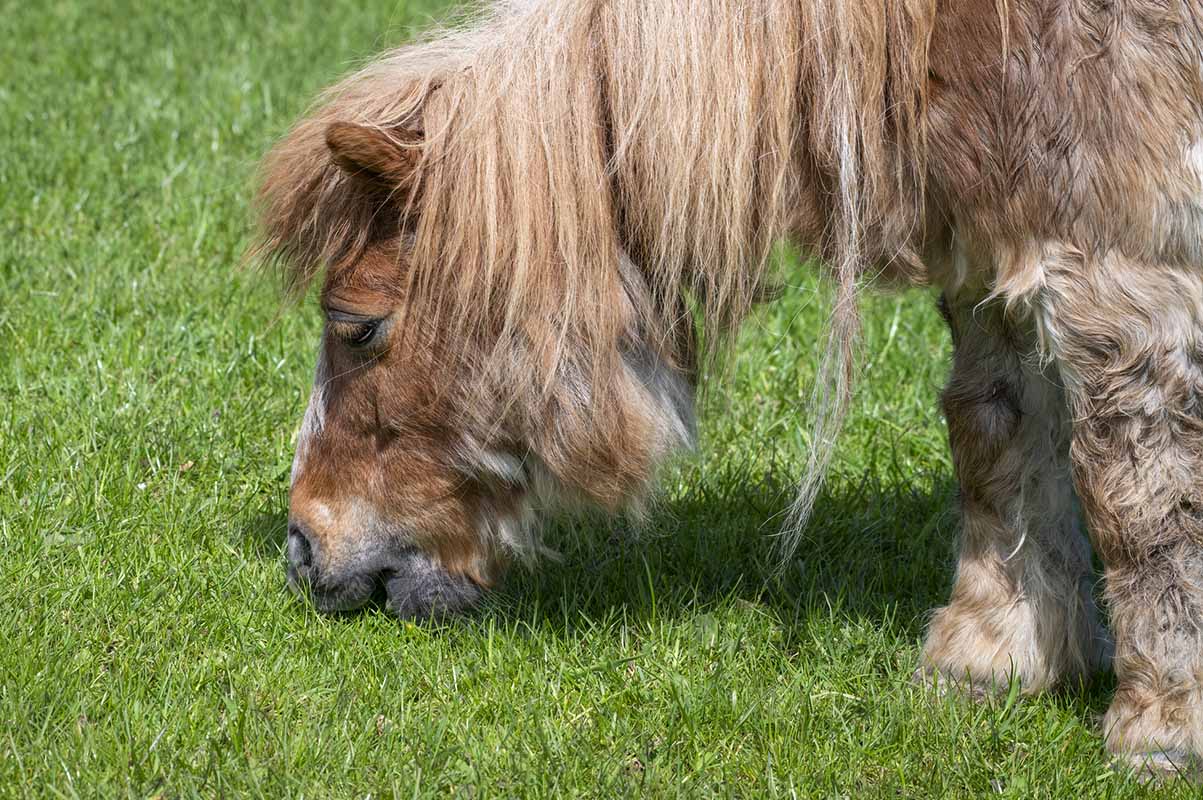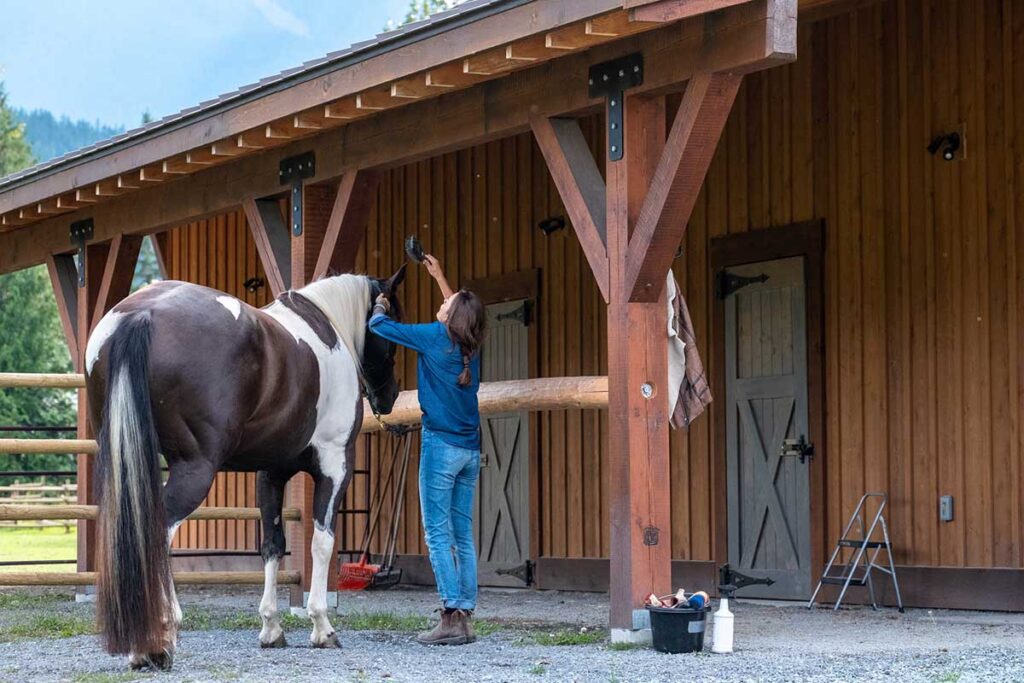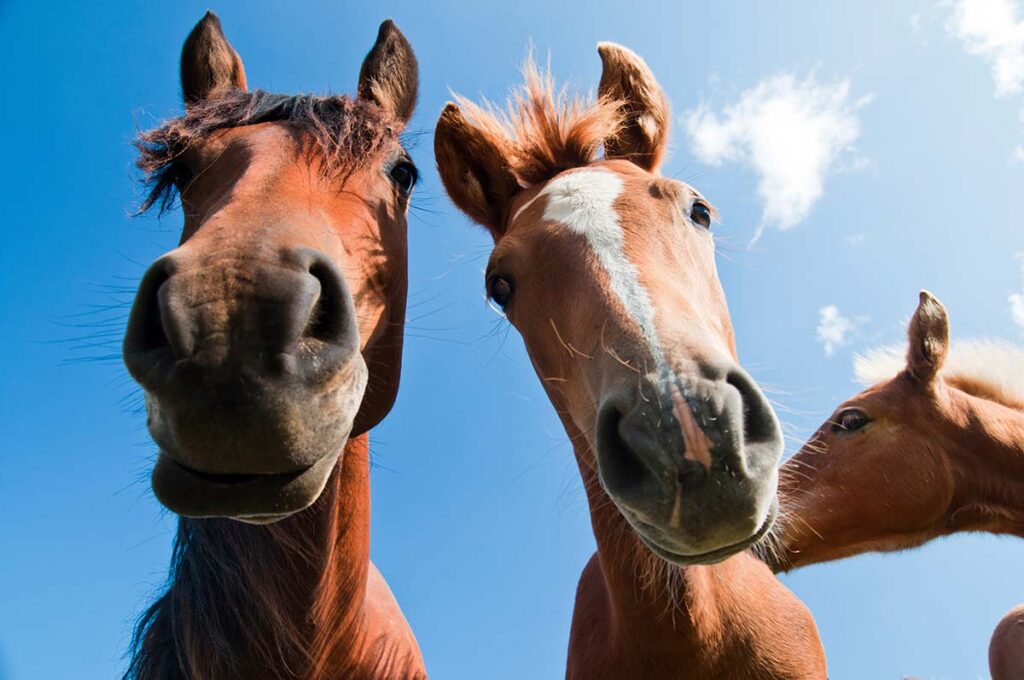What It Is: Also known as Cushing’s disease, pituitary pars intermedia dysfunction (PPID) is caused by an enlarged and overactive pituitary gland producing excess levels of adrenocorticotropic hormone (ACTH). These elevated ACTH levels, in turn, lead to overproduction of the steroid hormone cortisol. What causes PPID to occur is still unclear, but it’s extremely common in older horses: One study found that 85% of veterinarians are caring for at least one horse with PPID.
Signs: Excess hormones cause a slew of systemic signs, including a long hair coat that is slow to shed, muscle-wasting, lowered immune function and susceptibility to infection. Some horses with PPID are also prone to slow-onset chronic laminitis that can go undetected until hoof structures have been irreversibly damaged.
Diagnosis: In addition to clinical signs, veterinarians utilize two laboratory tests to diagnose PPID. The first is a blood test to measure resting levels of ACTH. The second is the thyrotropin-releasing hormone (TRH) stimulation test, which involves taking a blood sample, giving an injection of TRH, and then collecting a blood sample again 10 minutes later. ACTH will increase in all horses between the first and second blood test, but horses with PPID will show a dramatically higher increase. Because of natural seasonal and geographic fluctuations in ACTH, veterinarians will use published reference ranges to interpret laboratory results.
Treatment: The medication pergolide, sold under the brand name Prascend, can help control PPID. Pergolide works by binding with receptors in the brain that normally respond to dopamine, decreasing the blood levels of ACTH. The medication is given daily and is considered very effective in reducing the signs of PPID.
9 Signs of Pituitary Pars Intermedia Dysfunction

As your horse grows older, it’s important to keep an eye out for any changes in his behavior, health, or appearance. Pituitary pars intermedia dysfunction is a common endocrine disorder in senior horses. Early detection is key to managing PPID and maintaining a horse’s quality of life. Here are nine signs to watch out for:
- Slow shedding: If your horse takes longer than usual to shed his winter coat, it could be a sign of PPID. Keep a record of when you first notice him shedding, as this can vary from year to year.
- “Cat” hairs: Horses with PPID tend to hold onto longer hairs under their jawline and belly, even after shedding. If you find yourself clipping these stragglers each spring, it’s possible that PPID is the cause.
- Muscle loss: PPID can cause muscle wasting, which you can detect over time through photographs. In particular, keep an eye out for changes in your horse’s topline shape and potbelly.
- Recurring infections: Horses with PPID are more prone to foot abscesses, sinus infections and parasite infections. If your older horse experiences any of these conditions, you’ll want to ask your veterinarian to determine whether your horse has developed PPID.
- Fat accumulations: Horses with PPID might develop pronounced, bulging fat pads above their eyes, tailhead and along their crest. These will persist even as the horse loses weight.
- Wet stall: PPID can cause a horse to drink more and, therefore, urinate more. If you find yourself removing more wet bedding from your older horse’s stall than usual, tell your veterinarian.
- Skin conditions: Horses with PPID may have persistent skin conditions, such as rainrot or scratches. If your horse can’t seem to shake these conditions, ask your veterinarian to rule out PPID as a complicating factor.
- Sore feet: PPID can cause slow onset, chronic laminitis, which is a potentially devastating inflammatory condition of the hoof. Take any change in gait seriously in an older horse and call your farrier and/or veterinarian to investigate.
- Behavioral changes: Horses with PPID are often lethargic. Some might seem grumpy, others become mellow and easier to handle. Any behavior changes in an older horse should raise suspicions of PPID.
Take-Home Message
If you suspect your horse might have PPID, it’s important to consult with your veterinarian. If the diagnosis is confirmed, medication can help manage the condition, and management changes can help keep your horse comfortable. With early detection and proper treatment, a horse with PPID can live a happy, healthy life.
This article originally ran on EQUUS.








